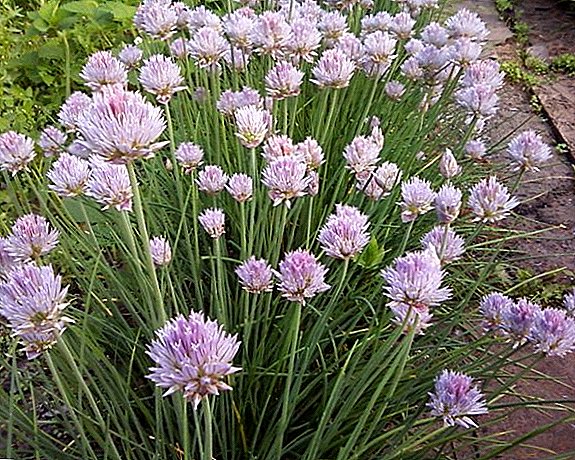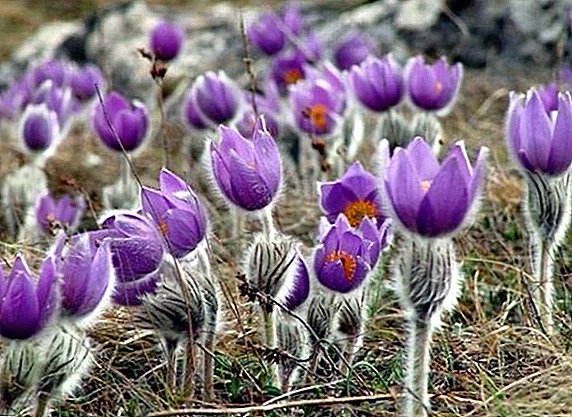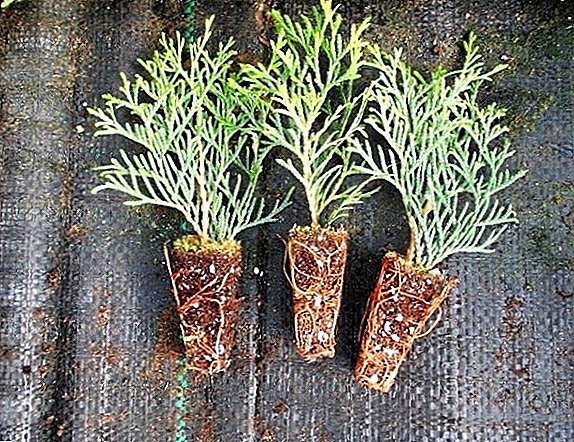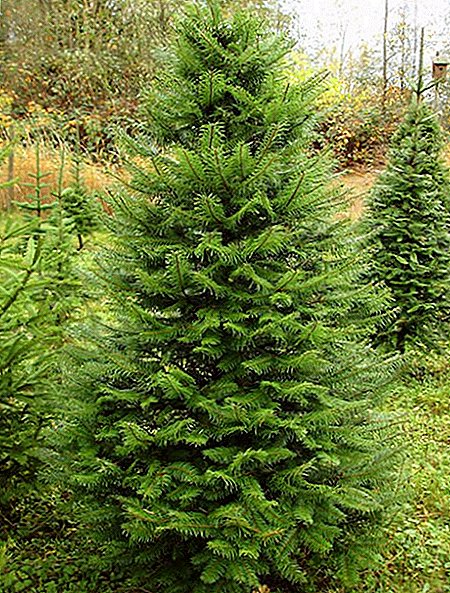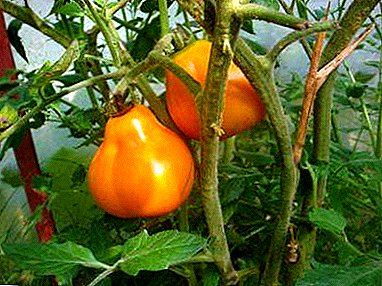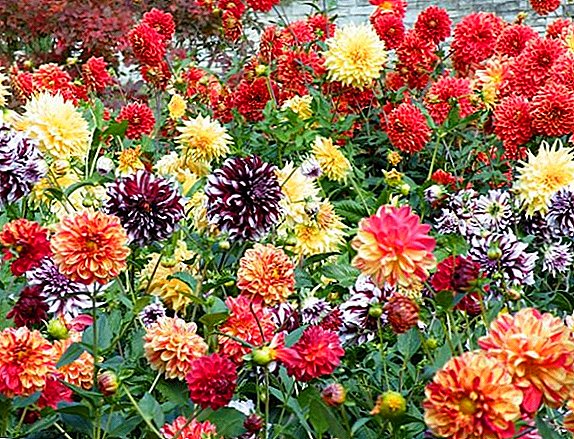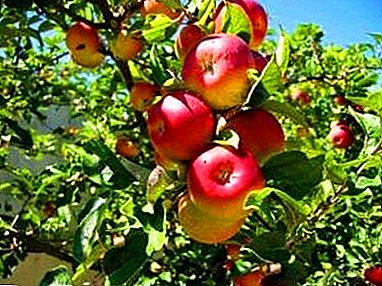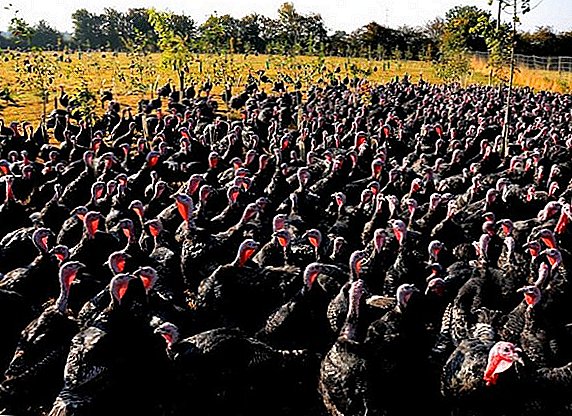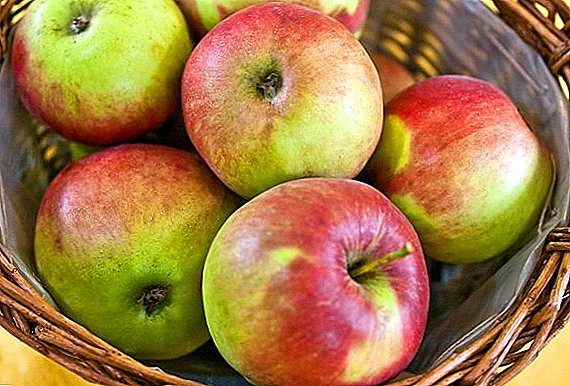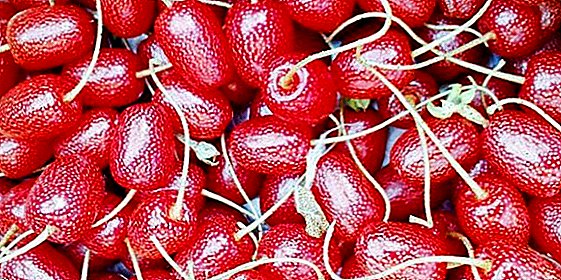 It is rare to find such an unusual plant in the gardens of our region with fruits similar to cherries, but 100 times more beneficial, like gumi or sucker multicolored. Let us tell you about gumi and you may want to plant this berry shrub in your garden.
It is rare to find such an unusual plant in the gardens of our region with fruits similar to cherries, but 100 times more beneficial, like gumi or sucker multicolored. Let us tell you about gumi and you may want to plant this berry shrub in your garden.
Botanical description
The sucker multicolor or gumi belongs to the family Lokhovye, is more common in countries Far East, China and Korea. Not so long ago began to appear and spread throughout Europe.  Gumi - deciduous shrub, which reaches 2.5 meters in height and 1.5 meters in width, with branches, studded with spines up to 4-5 cm in length. This is a high-yielding shrub, from a 10-year-old plant you can harvest up to 12 kg of berries per season.
Gumi - deciduous shrub, which reaches 2.5 meters in height and 1.5 meters in width, with branches, studded with spines up to 4-5 cm in length. This is a high-yielding shrub, from a 10-year-old plant you can harvest up to 12 kg of berries per season.
The leaves are smooth, shiny, as if wax, without notches along the edges. It blooms in May and June with cream or white small flowers, like bells, on short pedicels. Flowering is accompanied by a strong aroma, reminiscent of lilac.
The berries are covered with shrubs from June to August, since ripening does not occur simultaneously. Fruits are oval, up to 1.8 cm long and weighing up to 2 g, bright red in a light or silver speck, they hang down from long stalks. On ripening, it is not showered. Pulp berries gum juicy, tart and sweet and sour, and to taste - a combination of apple, cherry and cornel. Berries in their beneficial properties and the content of vitamin C in many ways exceed us known lemons, currants and even sea buckthorn. The composition is rich in vitamins A, C, E, lycopene and 17 amino acids that work as tonic and anti-inflammatory.
Important! Fresh berries are tastiest, but jam, jams or filling for the cake will also delight you with its taste.
Planting shrubs
The Loss Multiflorous Shrub is an unpretentious plant, but when you have Gumi, you need to carefully approach the issue of planting and further care.
Timing
It is necessary to plant a seedling in the ground in the middle of spring, when the threat of strong frosts has passed. Planting a gumi in the spring will warn the young bush of frost that it may not survive. 
Site selection
Gumi - heat-loving shrub, and therefore the place he needs to choose illuminated by the sun throughout the day. It is desirable that there be no drafts and strong northerly winds in this place.
Did you know? The Lokhovye family are distinguished by excellent heat resistance. They calmly withstand temperatures of up to 45 ° C. And some varieties - even up to + 55 ° C.
Technology and scheme
A loch is considered a self-pollinating plant, but gardeners, in whom it has been growing for a long time, claim that if there are several such shrubs on the site, then it bears much better fruit. Therefore, plant 2-3 bush at a distance of 1.5-2 meters from each other.  Gumi really like fertile soils, therefore we are preparing for planting in advance. The pit is dug 0.5 meters deep and 0.6-0.8 in diameter. At the bottom of the stack drainage of pebbles or expanded clay.
Gumi really like fertile soils, therefore we are preparing for planting in advance. The pit is dug 0.5 meters deep and 0.6-0.8 in diameter. At the bottom of the stack drainage of pebbles or expanded clay.
Ground is needed in equal parts: turf, sandy and humus. Mix everything, add 0.5 kg of wood ash, 250 g of nitrogen supplements and the same amount of double superphosphate.
When planting, the root neck of the seedling should deepen to 7 cm. After planting, the bush should be watered and mulched abundantly.
Proper care of the plant
The plant, though exotic, is easy to care for:
- timely watering, pouring at least one bucket at a time, and even better, use a hose while irrigating the branches of the bush;
- removing weeds around gumi;
- careful mulching of the soil with peat or fallen leaves;
- top dressing with organic or mineral fertilizers, especially in the first years of growth;
- in winter, the plant should be covered from frost, bending the branches to the ground, covering with spruce branches or sprinkling with fallen leaves.

Important! Do not wrap with sacking or wrap bush for the winter, as the plant will easily rot and die.
Breeding
In reproduction of gumi there are some nuances that must be followed in order to get a new young bush.
Seeds
Reproduction of gumi seeds is troublesome and ungrateful, since their germination does not exceed 10%, and fruiting of a bush from seeds does not occur until the fifth year of life.  But if you decide to propagate by seed, then first they need to stratification:
But if you decide to propagate by seed, then first they need to stratification:
- put the seeds in a container with wet sand and keep them there for about 5 months at a temperature of 18-20 ° C, maintaining a constant level of moisture;
- the next step will be to keep the seeds in a room with a temperature not higher than 5 ° C. As a rule, this is done for the winter, and in April, the seeds can already be planted in open ground.
Vegetative
Best suckers are propagated by layering. In early autumn, they choose the branches that are closest to the ground, make a cut across, treating it with "Kornevin".  Put this twig in a specially dug hole, sprinkle it with earth, and in order not to jump out, we pin it to the ground with special pins from the store or with ordinary wire.
Put this twig in a specially dug hole, sprinkle it with earth, and in order not to jump out, we pin it to the ground with special pins from the store or with ordinary wire.
Do not forget this place often watered, and in the spring of next year, you can use a sharp shears to separate the young seedling from the mother bush.
Also, layering proliferates plum, clematis, honeysuckle, dieffenbachia, room jasmine, cotoneaster, black currant.Cuttings not the most reliable way reproduction, as the cuttings root and take root very poorly.
If you have buckthorn growing in the yard, then there is a chance of engraftment of a branch of gum grafted to the family tree.
Did you know? Fruits and leaves of gum contain a huge amount of metals: zinc, copper, villages, zirconium, iron, nickel, gold.
Common diseases and pests
An interesting feature of the many-flowered sucker is that they are resistant to pests and diseases of our regions.
And even if the neighboring trees are damaged, gumi will grow as if nothing had happened.
With proper care and cultivation, many-flowered sucker will serve you up to 25 years. And each year it will give you a high yield of its healthy berries.


